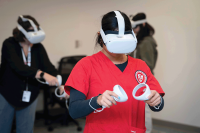Commitment to wellness culture, infused with fun and creativity, encourages nurses to engage with support.
With the COVID-19 pandemic now having crossed into a third year, its emotional and psychological toll on nurses remains high, a circumstance borne out by the American Nurses Foundation (the Foundation) Pulse on the Nation’s Nurses Survey Series. In the 2-year impact survey of 12,000 nurses released on March 1, sizable numbers reported feeling stressed (71%), exhausted (65%), and burned out (49%) within the past 14 days.
Bernadette Mazurek Melnyk, PhD, APRN-CNP, FAAN, FAANP, FNAP, vice president for health promotion, university chief wellness officer, and professor and dean of the college of nursing at The Ohio State University in Columbus describes the state of nurses’ mental health as a “pandemic inside the COVID-19 pandemic.” Her research showing high rates of depression and burnout echoes the Pulse Survey Series findings.
Since the pandemic’s start, the American Nurses Association (ANA), the Foundation, and partnering organizations have offered, highlighted, and continually updated an array of self-care resources for nurses via the Well-Being Initiative and Healthy Nurse, Healthy NationTM (HNHN). Getting nurses to engage with these evidence-based efforts and those of their employers and other organizations, however, remains challenging due to the degree of burnout they’re experiencing and other factors.
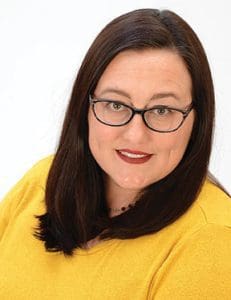

“Even though we know that it helps and the science is out there, sometimes it’s hard to see past where you are,” said Amelia Anderson Wright, RN, CCRN, clinical team lead at Duke Regional Intensive Care Unit in Durham, NC. “Committing to self-care can seem like just another thing to do.”
Other considerations also play into nurses not accessing available resources, according to Christine Pabico, PhD, RN, NE-BC, FAAN, director of the American Nurses Credentialing Center Pathway to Excellence Program, who also is an ANA member and president-elect of the Philippine Nurses Association of Metropolitan DC (PNAMDC). “There are many different layers to it. They don’t want their employers or even their colleagues to know they’re feeling a certain way because they don’t want to let their team down or be seen as weak. They want to be seen as resilient and positive.” She added that employer programs that ask for participation outside of working hours face steep hurdles. “Nurses associate their work as the stressor, so often they don’t want to spend a single minute there over their shift.”
ANA’s position statement on promoting nurses’ mental health calls for policymakers, healthcare leaders, and institutions to address nurses’ unique mental health needs and implement strategies to meet these needs. The statement emphasizes that nurses’ use of mental health resources shouldn’t threaten their licensure or employment and calls for an end to the stigma associated with mental health issues.
Building wellness culture
Bridging the gap between making resources available and getting nurses to engage with them rests on creating a wellness culture that supports evidence-based healthy behaviors and quality improvement throughout an organization, according to Melnyk, an ANA, American Psychiatric Nurses Association, and HNHN Advisory Committee member.
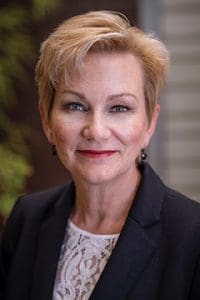

Anita Girard, DNP, RN, CNL, CPHQ, NEA-BC, chief nursing officer at Cedars-Sinai Medical Center in Los Angeles and president of ANA/California stressed the importance of initiatives that foster optimism and even fun in counteracting the psychological and moral injury that nurses are experiencing. “We as leaders have to create hope, think outside the box, and not stay stuck in the hopelessness of COVID,” she said.
Cedars-Sinai has implemented a range of activities guided by Jean Watson’s Science of Caring theory, which describes love, heart-centered caring, and compassion—including loving kindness towards oneself—as essential to nursing practice. One such activity involves letting go ceremonies in which employees move through a series of interactions such as a healing gong, a meditation, and a touch of hands, ending at a place where they write about whatever might be troubling them and put this note in a bowl to symbolically wash away the concern.
On the lighter side, Cedars-Sinai’s interactive delivery robots—both named Moxi—bring a little levity to units. Dressed up by employees, they roam units, waving and stopping for selfies with team members. “The robots not only provide nurses an opportunity to improve workflows, they also add positive energy and a mental break from COVID,” said Girard. Units also have created tranquility rooms that offer soothing music and meditation. At least one has a game room where nurses hold dance-offs and spin-the-wheel tournaments with prizes.
Pilot inspiration
Vidant Health, based in Greenville, NC, benefitted from pilot initiatives envisioned by Wendy Leutgens, DNP, RN, senior vice president of clinical services, as part of her DNP project focused on resilience.
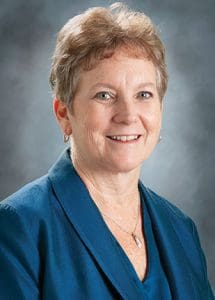

Partnering with Vidant’s employee assistance program (EAP) and office of experience, Leutgens initially offered sessions on mindfulness, self-care, and peer support techniques but found that nurses felt they couldn’t step away to attend. So she piloted walking rounds with the EAP director and other executives. Strolling through units, they dole out dark chocolates, facial ice packs to soothe mask-weary eyes, and spa-inspired cards with tips on self-care. In addition to bringing good cheer, the sessions enable the EAP director to have brief but meaningful discussions with nurses about their challenges. “She might spend 5 minutes with a nurse as we continue around. Even if she interacts that way with one or two people in a 2-hour period where we’ve seen 200, that’s still two people who had a chance right then to talk about what’s going on with themselves,” said Leutgens, a North Carolina Nurses Association (NCNA) member.
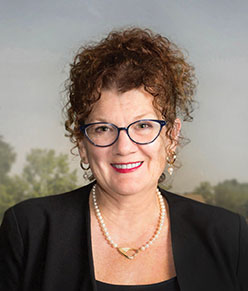

This intervention, expanded after the pilot to more services and from monthly to weekly with participation by other nursing and physician leaders, has had the added benefit of boosting staff awareness of and comfort level with EAP. Consultations and self-referrals have increased by a third, according to Julie Kennedy Oehlert, DNP, RN, Vidant chief experience officer and NCNA member.
Small group sessions
Leutgen’s DNP project led to small group listening sessions, which Cedars-Sinai and Duke also sponsor. At Duke, Wright, a member of the American Association of Critical-Care Nurses—an organizational affiliate of ANA—launched Real-Talk sessions before the pandemic as a debriefing mechanism for RNs after critical events.
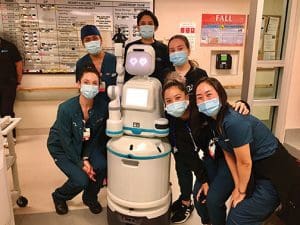

Sessions since the pandemic include discussions of specific patient experiences as well as COVID-19 related subjects, such as caring for patients who haven’t been vaccinated. Wright reminds attendees that these confidential meetings are neither substitutes for therapy nor a means for management to keep tabs on staff. She usually starts with a quote or reading. Some sessions have included practices like guided meditation, and they generally conclude with all participants describing what they intend to do for themselves that day.
“When we have a really good session, you can see people supporting each other and understanding that they’re not alone in their feelings,” Wright explained. Real-Talk started as monthly meetings but as the pandemic has worn on the frequency has stretched to about every 6 weeks, based on Wright’s schedule split between patient care and management. She recommended that anyone starting a similar program do so with a partner to ensure continuity when one organizer needs to recharge. Although Wright has experienced her own stress, she continues to facilitate the group to support her colleagues. “If it helps one person process all of this emotional stuff we’re carrying that will be enough and makes it worth it.”


Frontline managers like Wright are essential to empowering nurses to engage with mental health resources, and to spot individuals who might be especially struggling, according to Holly Wei, PhD, RN, CPN, NEA-BC, FAAN, professor and assistant dean for the PhD program at University of Louisville School of Nursing. “We have to really get to know nurses individually and give unit managers some autonomy [in this regard],” she said. “They understand so many things about individual nurses.”
Investing in wellness culture
Hospitals challenged to fill open shifts might not feel capable of mustering more resources for mental health support. Melnyk argued strongly against this inclination, as her own research has found a $2 return for each dollar invested.
Vidant’s Oehlert also cautioned about the perils of “scarcity mentality.” The long-term outcome of restricted investment in wellness culture is “that people don’t want to work for you. It’s short-sighted, when you’ve got humans that need to be inspired and cared for so they can care for patients,” she said. Oehlert and Leutgens stressed the relatively modest cost of Vidant’s interventions, especially requests that bubbled up from direct care nurses for items such as yoga mats for unit tranquility rooms and a tree of hope to acknowledge patients who have survived COVID-19. Oehlert received support from Vidant Health Foundation for some activities, including for food trucks that provide free meals about once a month at change of shift so both incoming and outgoing staff can access freshly prepared cuisine.
Wei, a Kentucky Nurses Association member, emphasized that even modest interventions, such as managers modeling compassion or installing boards for staff to draw on together, can reap big rewards.
Melnyk and Girard stressed that fixing operational pain points goes hand-in-hand with investments in wellness culture. For example, Cedars-Sinai doubled its complement of nursing student clinical placements and had them take on less-demanding tasks from nurses.
The association angle
Nursing associations also have a role in engaging nurses with mental health resources. For example, the Philippine Nurses Association of America offered training for its chapters on how to facilitate peer-to-peer support groups. PNAMDC built on that training by obtaining a grant to offer Heal the Healers, a five-topic webinar series covering subjects such as strategies to mitigate burnout, in collaboration with the Philippine Medical Association. Offering both Heal the Healers and peer-to-peer support sessions on the same day and having members receive invitations from people they trust encouraged participation, according to Pabico.
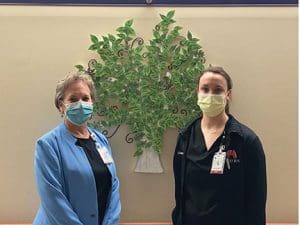

Marketa Houskova, DNP, MAIA, RN, executive director of ANA/California, also suggested that nursing associations serve a unique role as convener and organizer of resources. For instance, ANA/California hosted a widely attended online session on uncovering the biggest barriers to implementing mental health services for nurses, in which Girard and Melnyk participated.
“To bring good people together and come up with solutions [is helpful],” she said. “What someone says out loud might be what another was thinking and worried about saying out loud, and this can be cathartic. So providing a platform for discussion and seeking solutions is important.”
Melnyk emphasized above all else the necessity of normalizing mental health support. “When we seek help it’s not a weakness. It’s a strength,” she observed. “Everybody needs help at some point in their lives.”
—Genna Rollins is a writer-editor at ANA
Resources
ANA Position Statement, Promoting Nurses’ Mental Health
Healthy Nurse, Healthy NationTM
Nurse Suicide Prevention/Resilience
Pulse on the Nation’s Nurses Survey Series
See You Now Podcast
Episode 65: Sending Out An S.O.S.
Episode 64: Reporting Powers: Leading With Love, featuring Julie Kennedy Oehlert, DNP, RN
ANA/California Mental Health in Nursing: Uncovering Barriers to Access


















